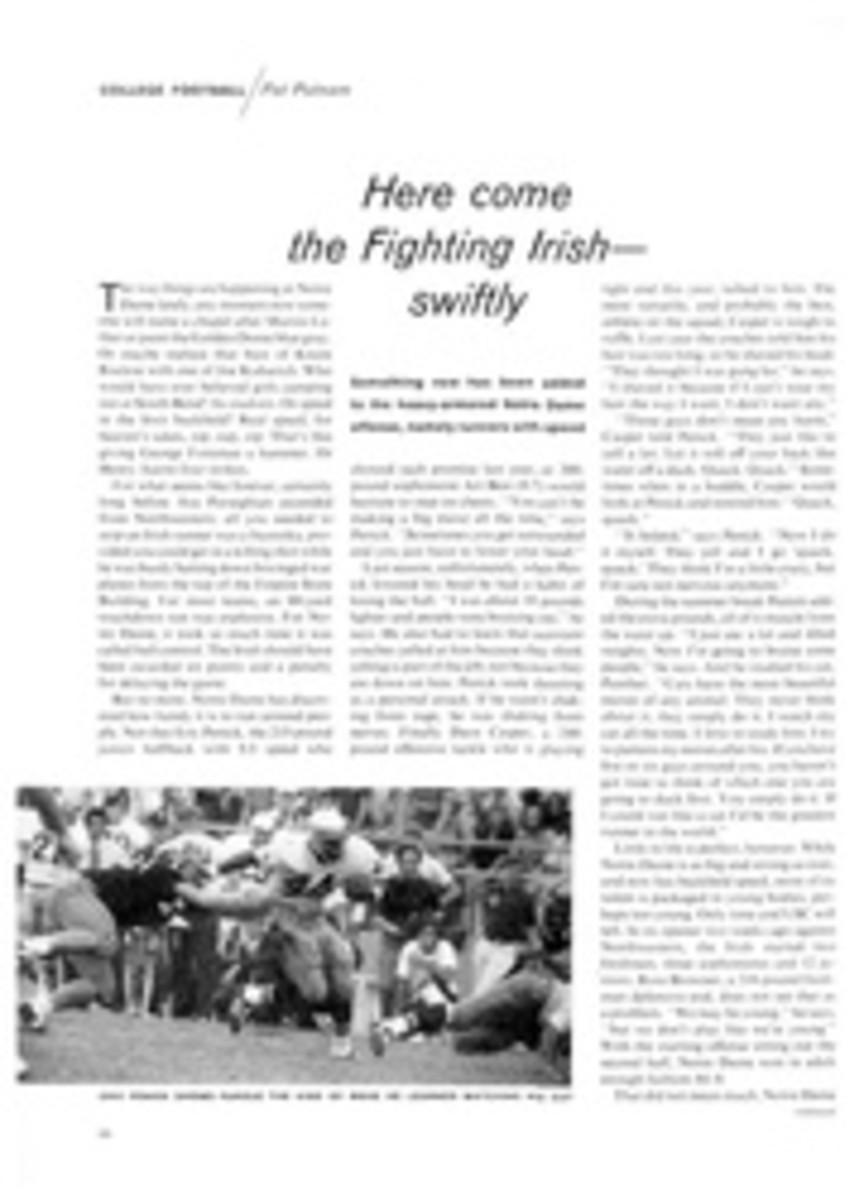
THE FEEDING GROUNDS OF SUMMER
Since July the bluefin tuna have been feasting along the North Atlantic coast from Cape Hatteras to Newfoundland, the smaller fish to the south and the megatuna—those giants in the 1,000-pound range—farther north. In October, when the water cools and their intake of mackerel, herring, squid and capelin has added 100 pounds or so to their already ample girth, the big fish move out, some heading east toward Europe and others south to wintering areas in tropical waters where they spawn. They are next seen in large numbers schooled up in the spring for the northern journey that completes the circle of their lives. Like a fleet of torpedoes, they move along the Bahamas, past Bermuda, and up the coast. The biggest of them go the farthest, to New England, Nova Scotia and Newfoundland. It was in these chill waters that Artist Stanley Meltzoff searched them out and, after innumerable disappointments, was able to gather the photographs and impressions he needed for these extraordinary paintings of the bluefin in a cobalt world of its own.
In gathering research for his earlier notable paintings of fish—the tarpon, bonefish and striped bass—Stanley Meltzoff has always donned his scuba outfit and sunk straight to the scene of the action, where his subjects have more or less obliged by posing. But on his first attempt to observe tuna off Prince Edward Island, he found that this was a quarry of a different sort. The tuna were there, all right, they were being caught every day. But while Meltzoff gamely swam into many a chum line catching brief glimpses of them, he was not entirely satisfied. The fish weren't sitting still enough to suit him. After two weeks of chill underwater hunting, the artist went south to Massachusetts Bay and enlisted the aid of Eddie Murray, whose 41-foot Hatteras, Cookie, and a 16-foot Boston Whaler were to become a sort of movable studio.
Tuna had been reported swarming around the H Buoy off Boston, so Skipper Murray pulled up nearby and put Meltzoff and me out to sea in the Whaler, complete with diving gear and a box of herring. We chummed with chunks of the herring for hours before the tuna finally arrived—great gray-blue shapes which came up at high speed, took the chum and shot away. Now was the time: Meltzoff slipped over the side while the herring was fed to the tuna for another half an hour. Gradually the competition grew keener for the free lunch and the herring could all but be dropped into the open mouths of the feasting tuna. When he surfaced Meltzoff was enthusiastic. "Within two feet of them," he burbled. "I came within two feet of them, but they were moving too fast." There was only one way to solve that problem. We would catch a tuna and tether it close to the Whaler. Then Meltzoff could swim right with it and examine it at his leisure.
When Cookie dropped us off next morning we had all the usual scuba paraphernalia plus two 130-pound fishing outfits, a folding chair fixed with a gimbal—and more herring. We put out two baits and hooked our tuna, but we were right in the middle of a commercial fishing fleet. Unhappily, that's when we discovered the Whaler's battery was dead. But the tuna took over, towing us through an open aisle in the fleet. Soon there we were, alone at sea in a 16-footer fastened to a big bluefin and without an engine.
Next, the weather changed. The wind shifted, a fog rolled in and it started to rain. An hour dragged by before the tuna finally tired and could be reeled up to the boat with the wire leader out of the water. All that remained was for Meltzoff to snap the leader onto the bow line and the fish would be properly lashed up. Instead, the gimbal tore loose, ripping right out of the chair. With the pressure off, the tuna headed for the bottom. At this point, to our great relief, out of the fog came Cookie. The fish was still hooked when we boarded the Hatteras, and the fight went on—until the rod butt snapped. And finally, the line broke. So much for tethering tuna. Meltzoff never did see this one. It was not until later in the week that the crew finally did bring a tuna to heel, this time from the bigger boat, and Meltzoff slipped in and swam with it. When he clambered back aboard, there was a quiet celebration. With a glass of Scotch in one hand and tuna fish sandwiches in the other, we offered a toast: onward and downward with the arts.
TWO PHOTOS
FRANK LERNER; PAINTINGS BY STANLEY MELTZOFF
Beneath a buoy off North Lake, Prince Edward Island, megatuna swim with harbor seals and feed on mackerel, their cousins.
THREE PHOTOS
FRANK LERNER; PAINTINGS BY STANLEY MELTZOFF
Mackerel trolled from a sportfisherman entice a tuna. After an explosive run, the fish sulks on the bottom (far right). Traditional enemies of giant tuna are man and the great killer whales that attack them throughout their northern range.
TWO PHOTOS
FRANK LERNER; PAINTINGS BY STANLEY MELTZOFF
Chummed up to the boat with chunks of fish, a tuna is fed a whole bait with a hook in it, then fought until finally gaffed.

